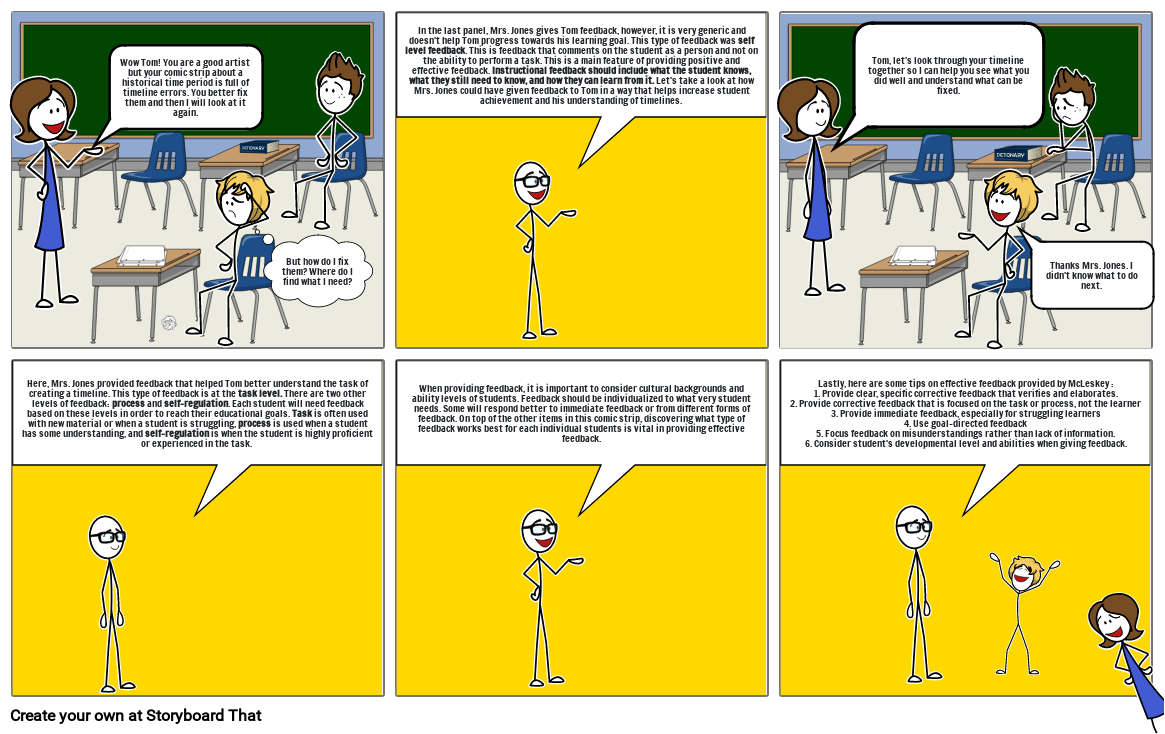Positive and Effective Feedback

Storyboard Text
- Wow Tom! You are a good artist but your comic strip about a historical time period is full of timeline errors. You better fix them and then I will look at it again.
- But how do I fix them? Where do I find what I need?
- In the last panel, Mrs. Jones gives Tom feedback, however, it is very generic and doesn't help Tom progress towards his learning goal. This type of feedback was self level feedback. This is feedback that comments on the student as a person and not on the ability to perform a task. This is a main feature of providing positive and effective feedback. Instructional feedback should include what the student knows, what they still need to know, and how they can learn from it. Let's take a look at how Mrs. Jones could have given feedback to Tom in a way that helps increase student achievement and his understanding of timelines. 
- Tom, let's look through your timeline together so I can help you see what you did well and understand what can be fixed.
- Thanks Mrs. Jones. I didn't know what to do next.
- Here, Mrs. Jones provided feedback that helped Tom better understand the task of creating a timeline. This type of feedback is at the task level. There are two other levels of feedback: process and self-regulation. Each student will need feedback based on these levels in order to reach their educational goals. Task is often used with new material or when a student is struggling, process is used when a student has some understanding, and self-regulation is when the student is highly proficient or experienced in the task. 
- When providing feedback, it is important to consider cultural backgrounds and ability levels of students. Feedback should be individualized to what very student needs. Some will respond better to immediate feedback or from different forms of feedback. On top of the other items in this comic strip, discovering what type of feedback works best for each individual students is vital in providing effective feedback.
- Lastly, here are some tips on effective feedback provided by McLeskey :1. Provide clear, specific corrective feedback that verifies and elaborates.2. Provide corrective feedback that is focused on the task or process, not the learner3. Provide immediate feedback, especially for struggling learners4. Use goal-directed feedback5. Focus feedback on misunderstandings rather than lack of information.6. Consider student's developmental level and abilities when giving feedback.
Over 30 Million Storyboards Created

